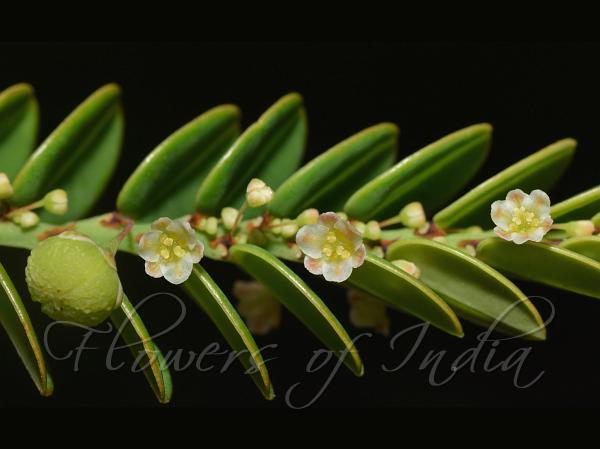|
| South-Indian Gooseberry |
|

|

| File size | 335480 |
| Original date | 12/10/22 10:48 PM |
| Resolution | x |
| Flash | Flash fired, return not detected |
| Focal length | 90.0mm |
| Exposure time | 1/200s |
| Aperture | 32.0 |
| Focus Distance | |
| Metering Mode | $meteringMode |
| Camera make | NIKON CORPORATION |
| Camera model | NIKON D5600 |
| Sensor type |
|
|
|
|
Photo: |
Botanical name: Phyllanthus narayanswamii Family: Phyllanthaceae (Amla family)
South-Indian Gooseberry is an under shrub, with
numerous branches; stem hairless, pinkish when fresh. Leaves are
alternate, distichous, often elliptic to oblong, leathery, blunt, with
a short sharp point, heart-shaped, margins slightly thickened,
recurved; veins and midribs raised on both sides, veins arched.
Leaf-stalks are up to 6 mm long. Stipules 3 x 1 mm, peltate, lacerate,
tapering, hastate at base. Flowers arise singly in leaf-axils, on
flower-stalks upto 6 mm long, very thin, thickened at the top. Tepals
are 6, ovate, hairless, rounded at tip; midrib thickened. Disc in
female flower saucer-shaped; in the male flowers of 6 small glands at
the base of tepals and alternating with them, stamens 3. Ovary is
3-loculed, verrucose glandular; styles 3, joined at base and spreading
over the top of ovary, each bifid half-way. Capsules aew about 3 mm
across, spherical, depressed, brown, verrucose glandular. Seeds are
golden-brown, upto 2 mm long, covered with red glands. South-Indian
Gooseberry is found in Peninsular India. Flowering: April-June.
| Identification credit: Ashutosh Sharma | Photographed in Kanyakumari district, Tamil Nadu. |
• Is this flower misidentified? If yes,